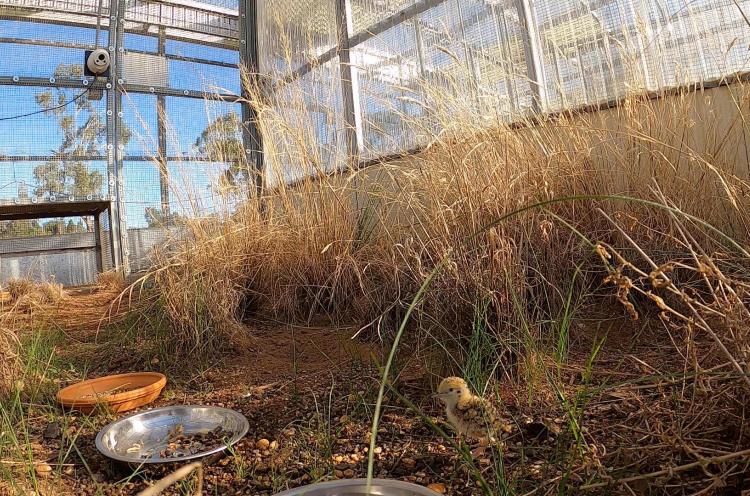
Taronga Western Plains Zoo has welcomed two critically endangered Plains-wanderer chicks that hatched on 8 March 2020. The chicks are the first born in Dubbo to the conservation breeding program that commenced in late 2018 to save this unique species from extinction.
“This is a really exciting time for everyone involved in the conservation breeding program,” said Plains-wanderer Keeper, Mark O’Riordan.
“To welcome our very first chicks here at the Zoo is a major milestone. There may be as few as 500 Plains-wanderers remaining in the wild and the ongoing drought may have impacted these numbers further, so every chick born is absolutely critical.
“Both parents are from the wild and have not bred in the Zoo before, so their chicks are extremely important genetically for the future of their species.”
“Dubbo had seen very little rain since the program commenced, however during January and February 2020 we welcomed much needed rain to the region and ultimately the Plains-wanderers have seen the conditions as favourable to breed,” said Mark.
Environment Minister Matt Kean said it’s exciting to welcome the rare and critically endangered Plains-wanderer chicks to Taronga Western Plains Zoo.
“Through programs like this, Taronga is ensuring that people will continue to be able to see these rare birds,” Mr Kean said.
Plains-wanderers can breed all year round provided the conditions are favourable. They will generally hatch 2 – 4 chicks from up to 5 eggs in a clutch. The birds are fully independent from approximately two months of age.
“Following the rain over the past couple of months we have witnessed active breeding behaviours with all of our breeding pairs. It would be great to get another clutch from a different pair, but at this stage we are over the moon with two chicks so far,” said Mark.
Keepers are very hands-off with the Plains-wanderer population. Keepers will monitor the chicks’ growth, behaviours and feeding via CCTV and won’t know if they are male or female until their first health check occurs at six weeks of age.
“To date we have learnt a lot about this shy and naturally timid species having monitored our population closely for 18 months. The more information we can gather and share with our partners will ultimately benefit the program and help save this species from extinction,” said Mark.
The Plains-wanderer conservation breeding program is part of the National Recovery Plan, aiming to establish a sustainable population that can support the reintroduction of wild populations.
The Plains-wanderer breeding conservation program at Taronga Western Plains Zoo is located behind the scenes in the 110-hectare Taronga Sanctuary, dedicated to the conservation of native species. The Plains-wanderer facility includes 30 purpose-built aviaries.
Background information
The Plains-wanderer is a small quail-like ground dwelling bird standing about 12 – 15cm tall and weighing about 40 – 95 grams. Both sexes have straw-yellow legs and bills, and their plumage is mainly fawn with fine black rosettes. The larger female is easily distinguished by her prominent white-spotted black collar above a rich rufous breast patch.
The Plains-wanderer is classified as an EDGE species (Evolutionary Distinct and Globally Endangered) through the EDGE of Extinction program which highlights and protects some of the most unique species on the planet which are on the verge of extinction. The Plains-wanderer features as #1 Bird on the EDGE list because of its high extinction risk and evolutionary uniqueness. The species has experienced a decline of >90% since 2001 in both its population strongholds in the NSW Riverina and in Northern Central Victoria.
Taronga Western Plains Zoo in partnership with the Department of Planning, Industry and Environment (DPIE) Saving Our Species program, Taronga Zoo, Zoos Victoria, Zoos South Australia and Featherdale Wildlife Park are working together to establish and maintain an insurance population against extinction in the wild, as well as to maintain a healthy genetic population that will boost wild populations in managed habitat.
The ongoing management of habitat across the species range is also a critical part of this program. Across the species range, particularly in New South Wales and Victoria, private landowners and managers are working with government and not-for-profit organisations to protect the species native grassland habitat. Collectively, the work being done by all project partners aims to remove this species from the critically endangered list.
